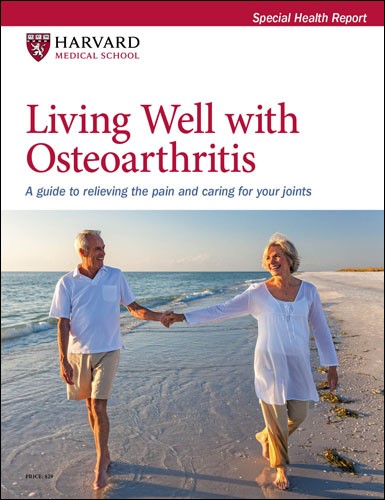Can platelet-rich plasma injections heal your joints?
Research is mixed, but new evidence shows the treatment might fall short for some conditions.

Platelet-rich plasma (PRP) injections are promoted as a way to reduce pain and speed healing for a number of common problems that affect the tendons, muscles, and joints, ranging from arthritis to shoulder pain.
The treatment harvests platelets (tiny blood components that promote clotting and healing) from your own blood. They are then injected back into the injured area along with blood plasma (the liquid part of your blood), with the idea that they will supercharge your body's natural healing process.
"Platelets contain proteins called growth factors that are involved in the natural development of many tissues," says Dr. Jeffrey Katz, a professor of orthopedic surgery at Harvard Medical School. "These factors may help reduce the inflammation associated with osteoarthritis and tendinitis."
PRP injections can be done in a 30-minute office procedure and are most commonly used for knee, shoulder, foot, ankle, and elbow problems. Often the underlying conditions are difficult to treat, and a simple injection to provide symptom relief sounds great. But is PRP therapy effective?
"Historically, research into the use of PRP to treat musculoskeletal problems has produced mixed results," says Dr. Katz. Some studies show a benefit; others don't. And now, a series of well-designed clinical trials has found that PRP doesn't appear to work for three conditions that it is often used to treat: knee osteoarthritis, ankle osteoarthritis, and Achilles tendinitis (irritation or inflammation of the tendon that connects your heel to your calf).
Weighing the benefits of PRPIf you are considering PRP treatment, there are four questions you should ask. 1.Is PRP effective for the condition you want to treat? "The evidence that PRP actually works in osteoarthritis and Achilles tendinitis is not compelling," says Dr. Jeffrey Katz, a professor of orthopedic surgery at Harvard Medical School. PRP appears to be more effective for lateral epicondylitis (tennis elbow). The evidence for other conditions is either limited or conflicting, he says. 2.Is the treatment worth the cost? Most insurance plans don't cover PRP treatment, which can cost $1,000 or more per treatment. Many doctors recommend multiple injections over time, so the cost can add up. 3. What are the risks of treatment? PRP injections are likely safe and don't usually cause side effects, says Dr. Katz. Because it uses your own blood, it's also unlikely to prompt an immune system reaction. Some less common side effects of PRP include skin irritation, bleeding, or infection. 4. Is there a better option? Consider whether another therapy or management strategy might be more effective for your condition. |
New research suggests no benefit
The studies were all published in JAMA in the summer and fall of 2021. All three studies came to the same conclusion, says Dr. Katz, whose editorial examining the findings appeared along with the third study in the Nov. 23 issue. Trial participants treated with PRP fared no better than people who received a placebo treatment, he says.
However, that doesn't mean that PRP is completely out of the running. PRP formulations often have different concentrations of platelets and growth factors. It's possible that certain mixtures are more effective than others, which could explain why research results have been inconsistent, says Dr. Katz.
Some professional organizations were already hesitant to endorse PRP injections because of the variable research findings. The American College of Rheumatology and the Osteoarthritis Research Society International, for example, recommended against using PRP for osteoarthritis. The American Academy of Orthopaedic Surgeons supported the use of PRP on a "limited" basis.
Armed with this new evidence, Dr. Katz says he thinks it's time for doctors to stop using PRP for osteoarthritis and Achilles tendinitis until there is evidence that shows the treatment works.
People considering PRP injections for other conditions should do their homework and weigh their options before they move ahead.
Image: © dimid_86/Getty Images
About the Author

Kelly Bilodeau, Former Executive Editor, Harvard Women's Health Watch
Disclaimer:
As a service to our readers, Harvard Health Publishing provides access to our library of archived content. Please note the date of last review or update on all articles.
No content on this site, regardless of date, should ever be used as a substitute for direct medical advice from your doctor or other qualified clinician.
















